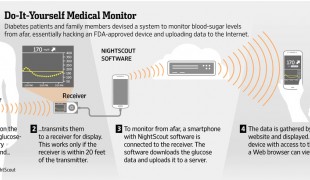- 5309
- 407
- 1
- 4
- 0
- Help Ukraine
About the solution
Type 2 diabetes runs in Dimistris’ family. His grandfather died of complications related to the condition, his mother was diagnosed with the disease when he was 10 years old, and his Aunt Zacharoula also suffered from it.
“When they were diagnosed back in the 1970s, there were no data to show which medicine was most effective for a specific patient population. Today, 29 million Americans are living with diabetes. And now, in an emerging era of precision medicine, things are different. Increased access to troves of genomic information and the rising use of electronic medical records, combined with new methods of machine learning, allow researchers to process large amounts of data. This is accelerating efforts to understand genetic differences within diseases – including diabetes – and to develop treatments for them. The scientist in me feels a powerful desire to take part”, he explained.
So the mathematician is now using big data to optimise treatment.
“My students and I have developed a data-driven algorithm for personalized diabetes management that we believe has the potential to improve the health of the millions of Americans living with the illness. It works like this: The algorithm mines patient and drug data, finds what is most relevant to a particular patient based on his or her medical history and then makes a recommendation on whether another treatment or medicine would be more effective. Human expertise provides a critical third piece of the puzzle. We conducted our research through a partnership with Boston Medical Center, the largest safety-net hospital in New England that provides care for people of lower-income and uninsured people. And we used a data set that involved the electronic medical records from 1999 to 2014 of about 11,000 patients who were anonymous to us. Next, we developed an algorithm to mark precisely when each line of therapy ended and the next one began, according to when the combination of drugs prescribed to the patients changed in the electronic medical record data. All told, the algorithm considered 13 possible drug regimens. For each patient, the algorithm processed the menu of available treatment options. This included the patient’s current treatment, as well as the treatment of his or her 30 “nearest neighbours” in terms of the similarity of their demographic and medical history to predict potential effects of each drug regimen. The algorithm assumed the patient would inherit the average outcome of his or her nearest neighbours.
If the algorithm spotted the substantial potential for improvement, it offered a change in treatment; if not, the algorithm suggested the patient remain on his or her existing regimen. In two-thirds of the patient sample, the algorithm did not propose a change”, the scientist described.
Dimitris believes the algorithm could be applicable to other diseases, including cancer, Alzheimer’s disease, and cardiovascular disease.
Adapted from: https://bit.ly/33A1O8s
This solution shall not include mention to the use of drugs, chemicals or biologicals (including food); invasive devices; offensive, commercial or inherently dangerous content. This solution was not medically validated. Proceed with caution! If you have any doubts, please consult with a health professional.
DISCLAIMER: This story was written by someone who is not the author of the solution, therefore please be advised that, although it was written with the utmost respect for the innovation and the innovator, there can be some incorrect statements. If you find any errors please contact the patient Innovation team via info@patient-innovation.com
-
-
740
-
0
-
17063

Nightscout – an open source, do-it-yourself continuous glucose monitor in the Cloud
CAREGIVING
(SELF)-CARE: EATING: Eating independently.
(SELF)-CARE: DRINKING: Drinking independently.
diabetes type 1
diabetes type 2
Gestational Diabetes
App (Including when connected with wearable)
Promoting self-management
Managing diabetes
To implement a diagnostic tool
Preventing (Vaccination, Protection, Falls, Research/Mapping)
Caregiving Support
Endocrinology
General and Family Medicine
Internal Medicine
United States
-
-
-
761
-
0
-
14347

I-Port™ – Medication delivery device
-
-
-
615
-
12
-
13521

Diabetic invents app to manage diabetes
COMMUNICATION: Communicating, whether by speaking, listening, or other means
(SELF)-CARE: EATING: Eating independently.
(SELF)-CARE: DRINKING: Drinking independently.
diabetes type 1
diabetes type 2
App (Including when connected with wearable)
Muscle weakness
Excessive thirst or hunger
Increased urination
Dry skin
Depression or anxiety
Fatigue
Weight gain
Managing diabetes
To improve Treatment/Therapy
Raise awareness
Endocrinology
General and Family Medicine
Netherlands
-
 en
en